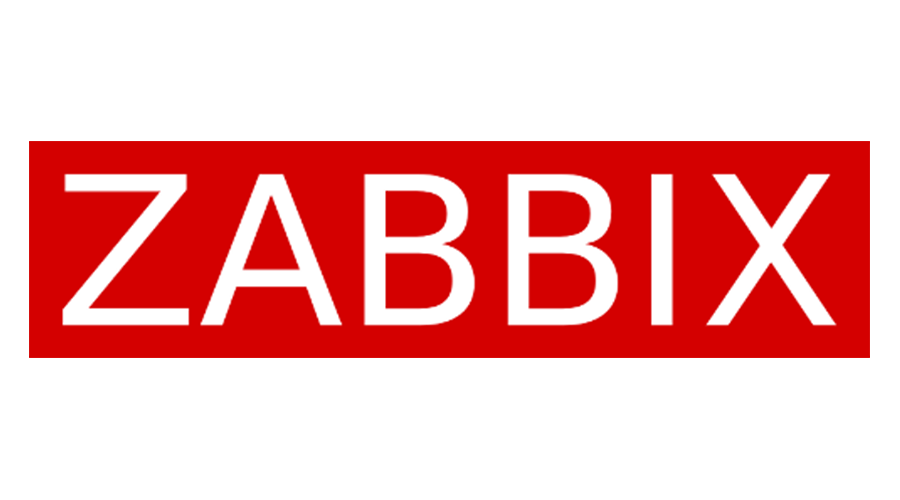Discovery and CMDB
Configuration Management Database (CMDB)
CMDB is a database that records an organization’s IT assets and the relationships between these assets. Based on IT service management processes, it provides accurate and up-to-date asset information, supporting IT service management practices such as service delivery, incident management, problem management, and change management.
Through CMDB, organizations can manage their IT assets more effectively, enhancing service quality. It encompasses all IT assets and their relationships within an IT organization. By tracking the lifecycle of these assets, CMDB manages processes such as maintenance, updates, and decommissioning.
Discovery
In IT service management processes, having accurate and up-to-date asset information is a fundamental factor that influences processes such as service delivery, problem resolution, and change management. Discovery is responsible for collecting this information and transmitting it to the CMDB. This process involves discovering network, system, software, and hardware components through automated or manual methods. Additionally, integration with other systems allows the incorporation of data that cannot be obtained through discovery, enriching the CMDB.
The integration between the discovery process and CMDB enables the direct addition of automatically discovered assets to the CMDB. This integration ensures that the CMDB is populated with current and accurate asset information. Asset information obtained through discovery undergoes verification and filtering processes before being added to the CMDB. This step ensures the reliability and accuracy of the information maintained by the CMDB.
The discovery process can operate continuously and perform automatic updates. This enables the CMDB to quickly adapt to changes in the organization’s IT infrastructure.
OpenText Universal Discovery & Universal CMDB
Universal Discovery and Universal CMDB create a Configuration Management System (CMS) for agile operations across multi-cloud and hybrid IT environments.
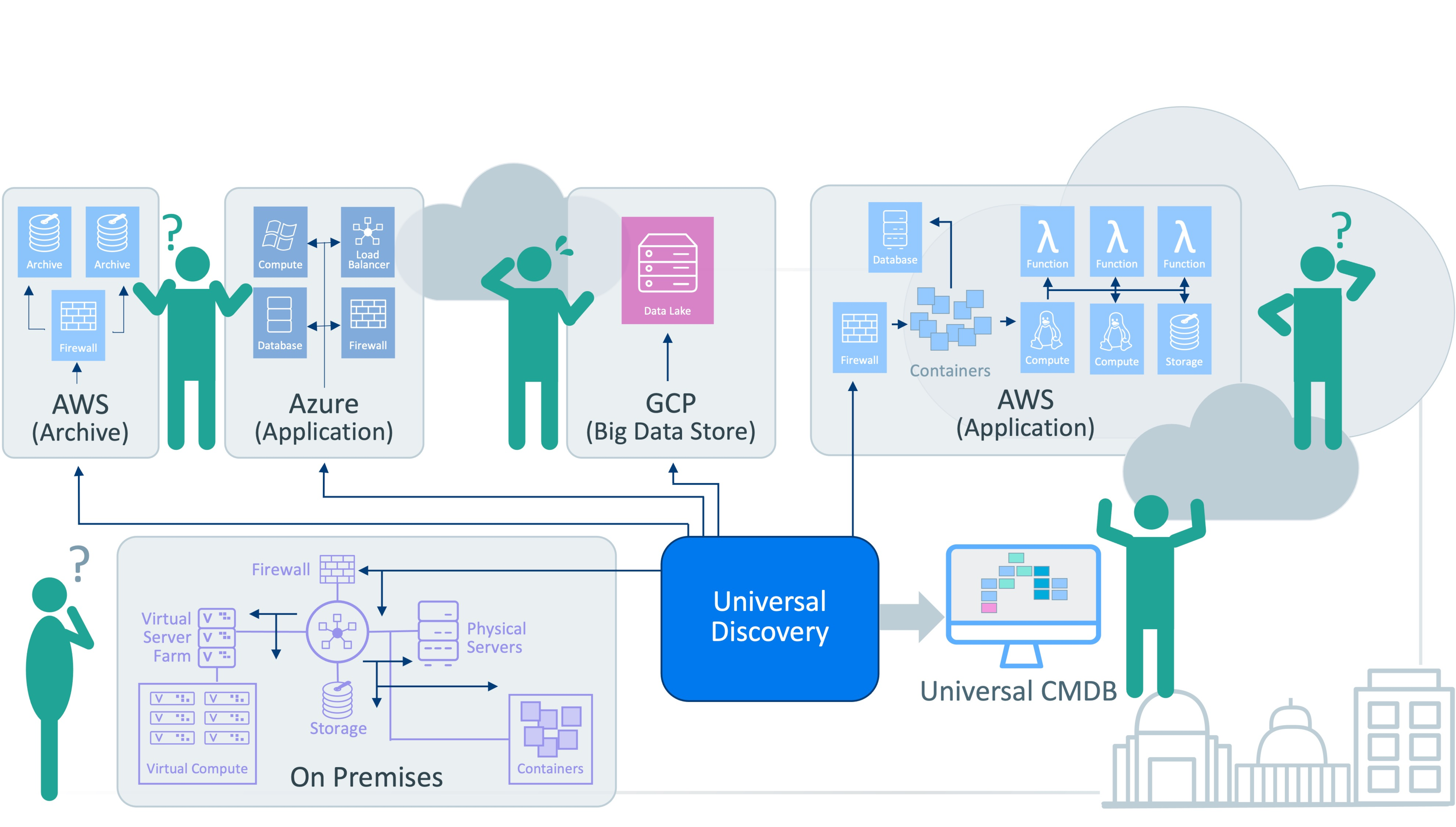
Configuration management data is complex, and sharing and conveying this data, especially with business units outside of IT, is often challenging. With Universal Discovery and Universal CMDB, you can easily share, manage, process, and convey the value of this data through customizable dashboards and widgets. You can track policies and compliance with just a few mouse clicks. Since Universal Discovery/Universal CMDB has robust REST API integration, sharing discovered data and integrating with other systems is possible, even if ready-made integration has not been provided.
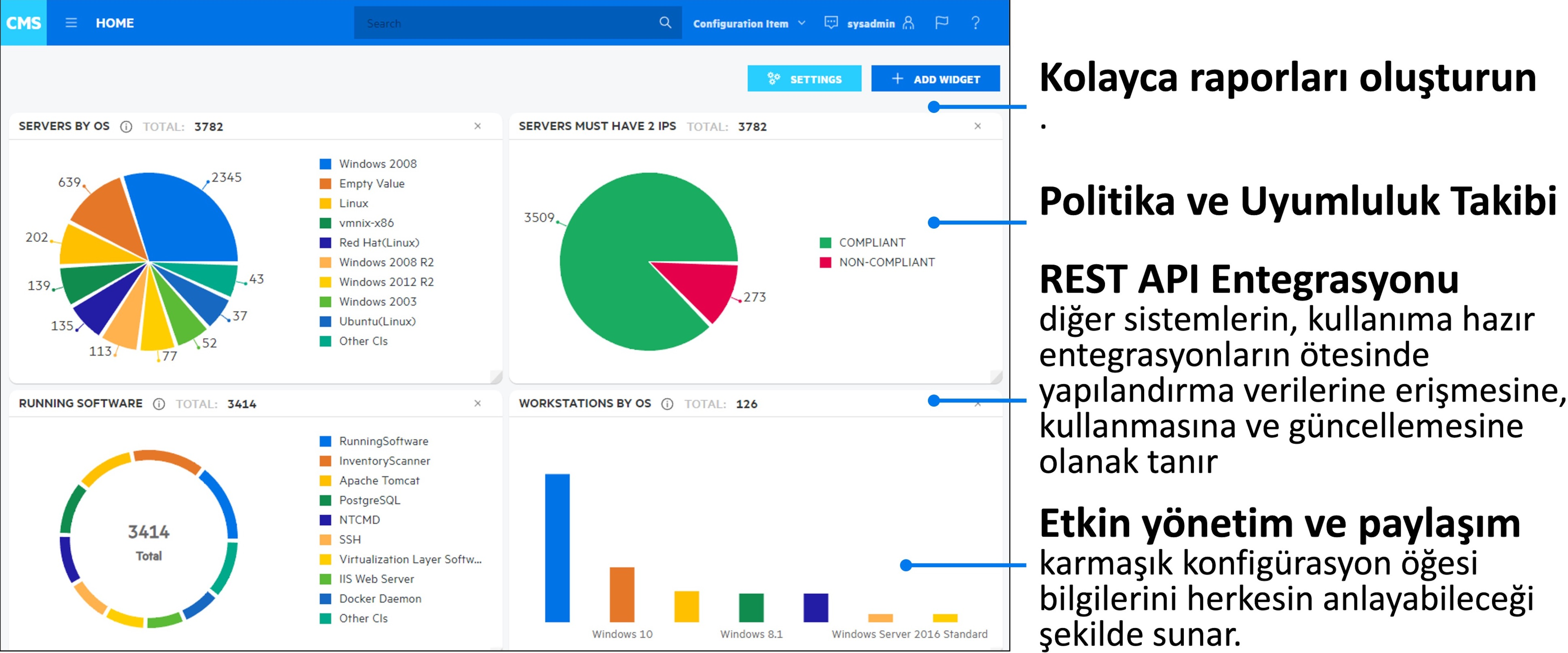
Single, Reliable Source of IT Truth
OpenText Universal CMDB aims to consolidate information about an organization’s IT assets, configurations, and relationships to create a unified and reliable source. This helps prevent inconsistencies and conflicting data between different systems.
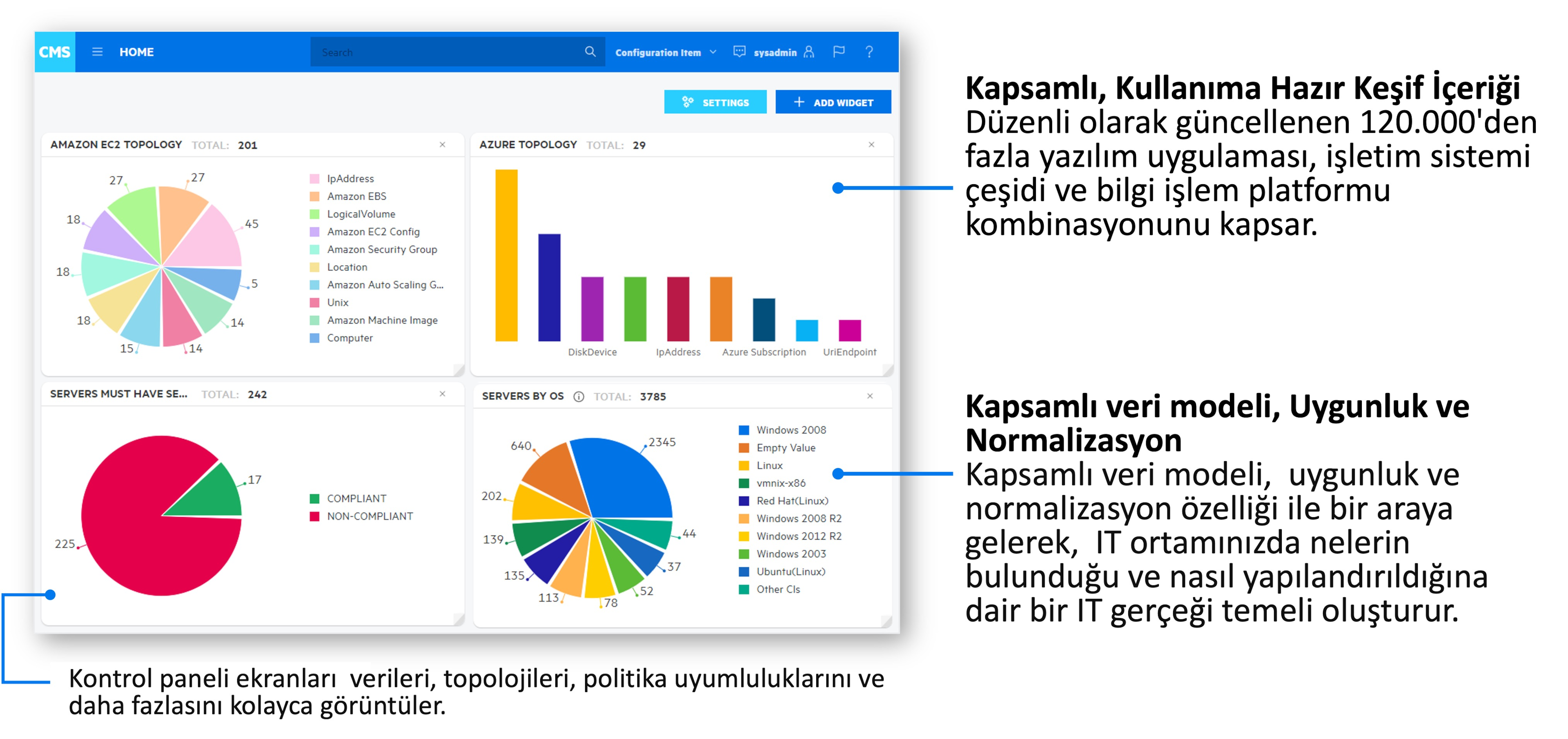
Data Source for Delivering and Managing Business Services
Unified and accurate information provided by OpenText Universal Discovery and Universal CMDB is crucial for delivering and managing critical business services. It ensures that the IT environment aligns with business requirements and goals.
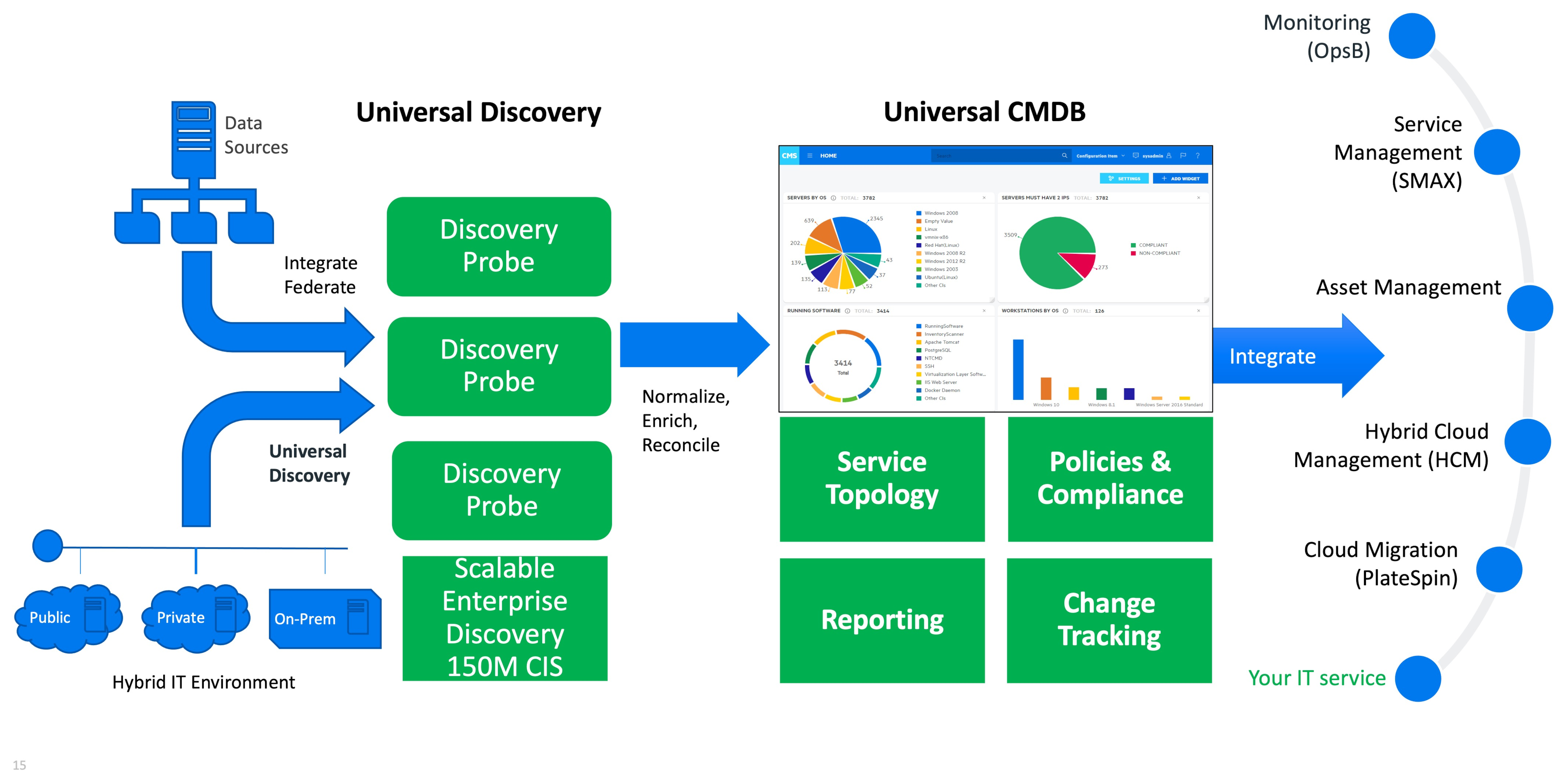
Universal Discovery and Universal CMDB provide more visibility into how infrastructure, applications, and resources are mapped, offering faster resolution times in case of any service impact.
Change and Impact Analysis
Detailed change and impact analysis allows you to understand the consequences of any configuration changes (such as updating a server to the latest operating system or shutting down a storage array for routine maintenance). Your IT teams can carefully observe the impact of any changes made and help determine the reasons for service impacts when changes occur.
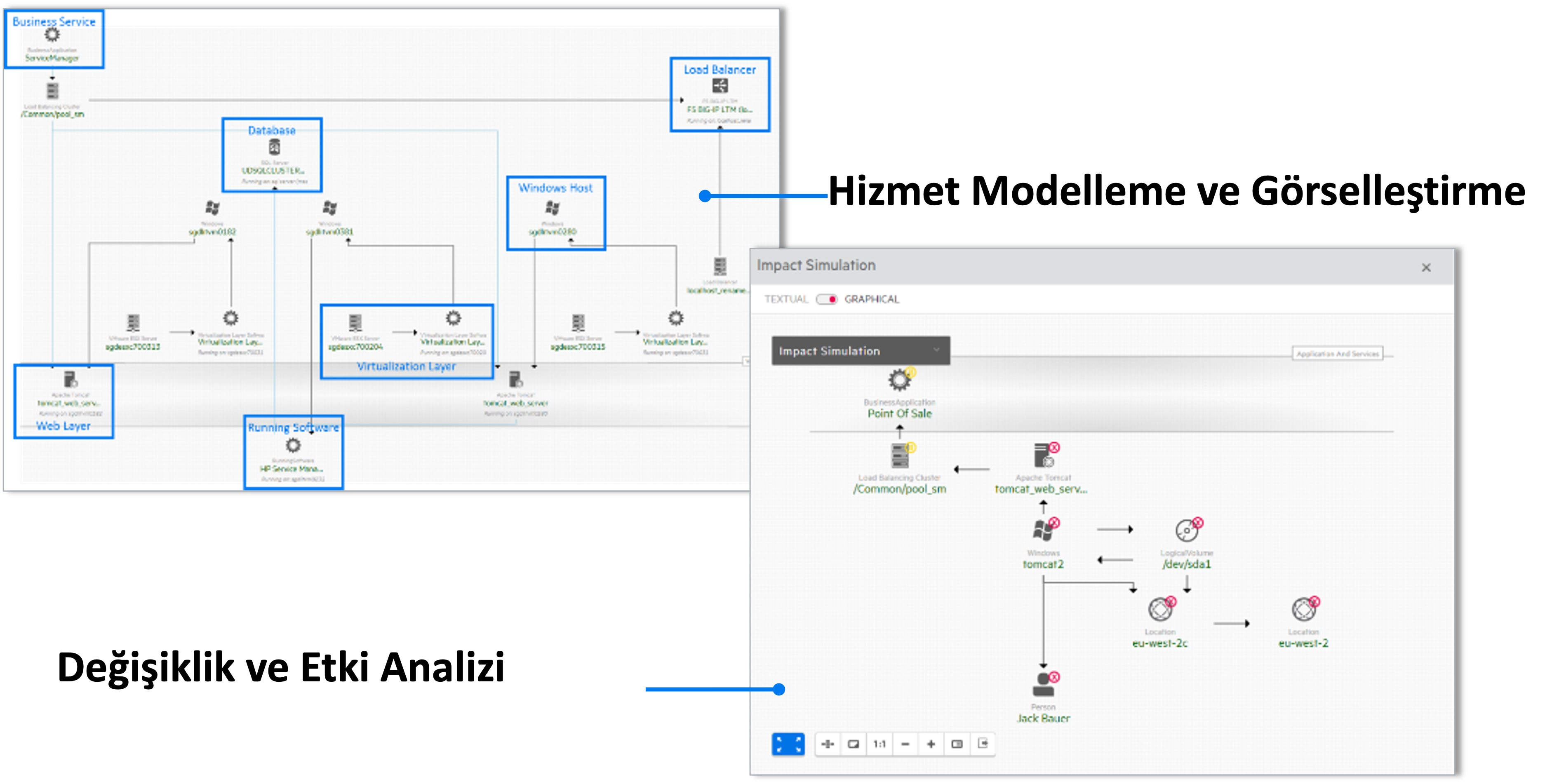
UCMDB provides the ability to maintain a continuous history of CI changes. Change tracking allows prioritizing disruptions caused by changes quickly and monitoring the change management process.
Discovery Capability
The ability to discover more than 120,000 combinations of software applications, operating systems, and computer platforms implies support for a wide range of technologies. This makes it easier for organizations to identify their IT assets, whether on-premises or off-premises (in the cloud).
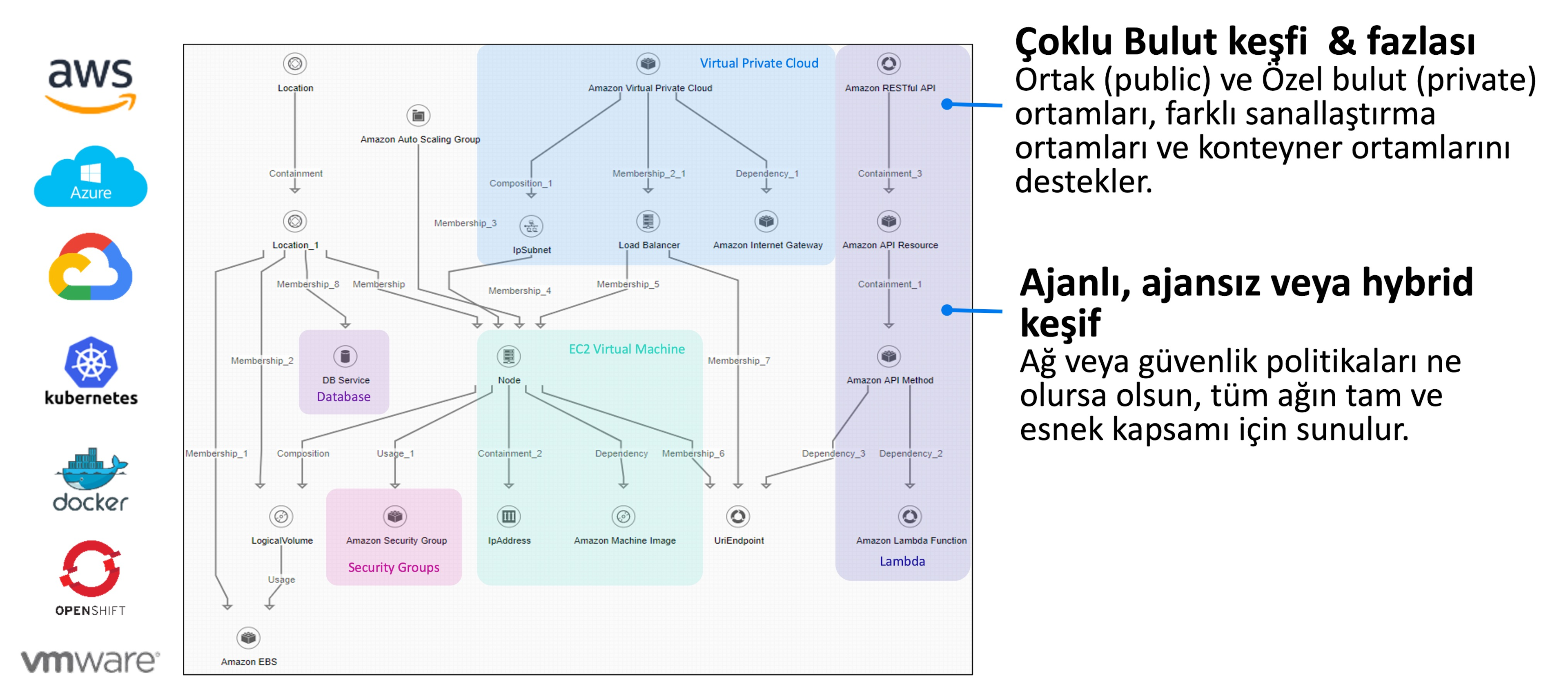
Universal Discovery leverages both agent-based and agentless discovery, even allowing a combination of both. This ultimate flexibility means you can discover what’s connected to your network regardless of your network or security policies.
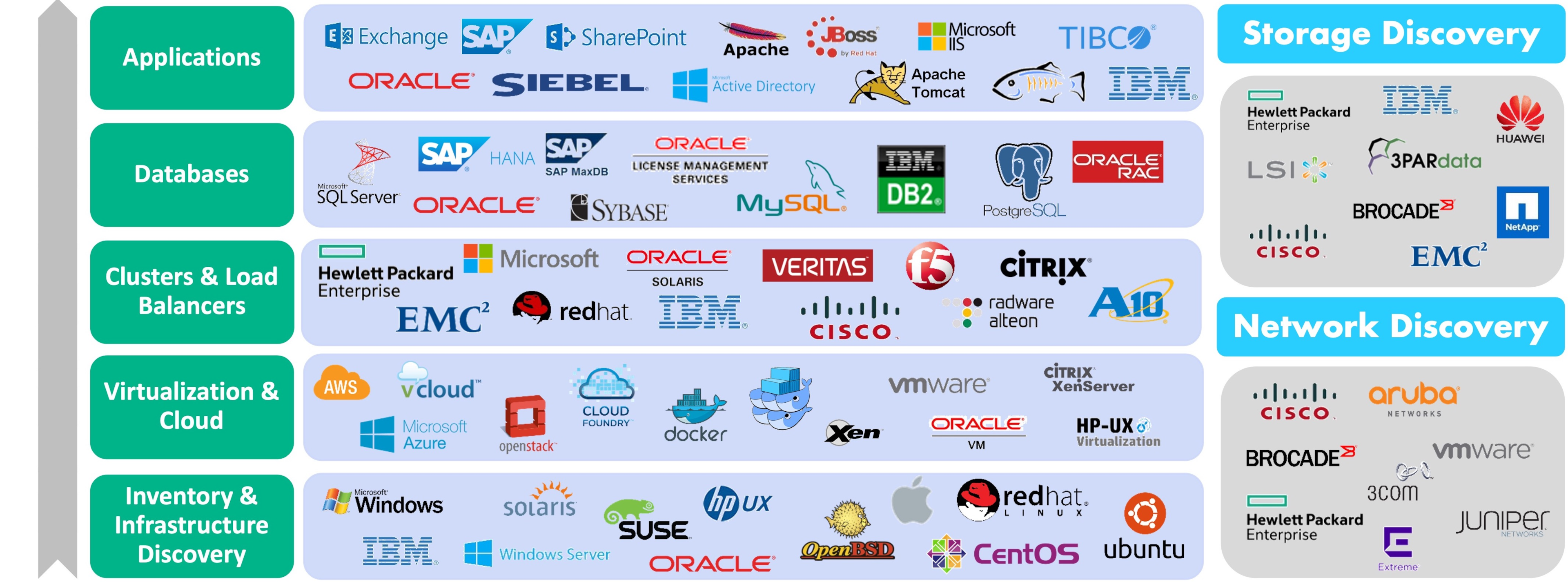
Spiral Discovery
Spiral discovery characterizes Universal Discovery’s approach to active discovery. Active discovery is primarily achieved through discovery patterns, functionality components that allow Universal Discovery to collect specific types of information. Each discovery pattern gathers only a small piece of the puzzle. By running many successive patterns, a rich model of the IT environment is created. This approach is highly efficient and easily adaptable to meet the unique requirements of your IT environment.





